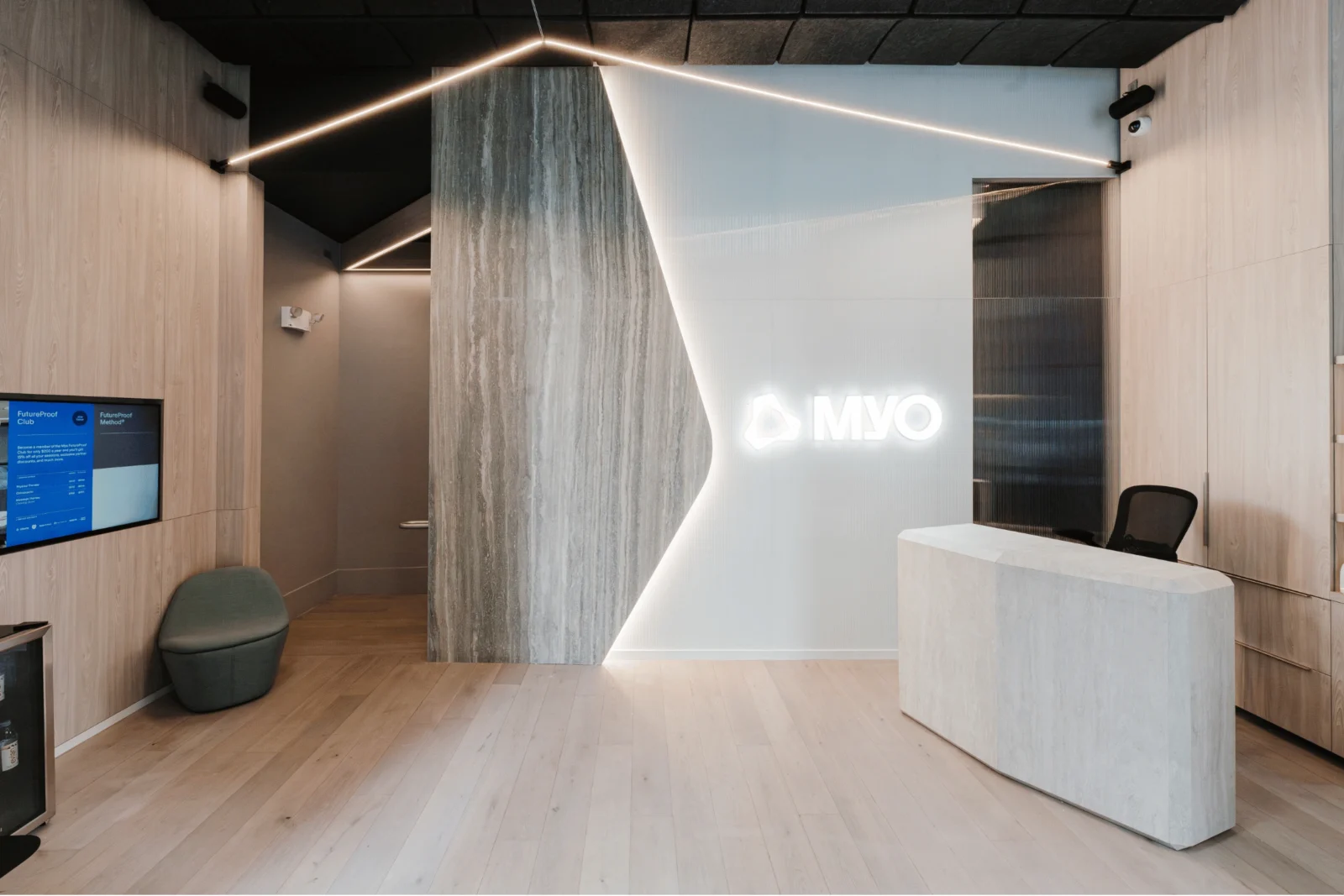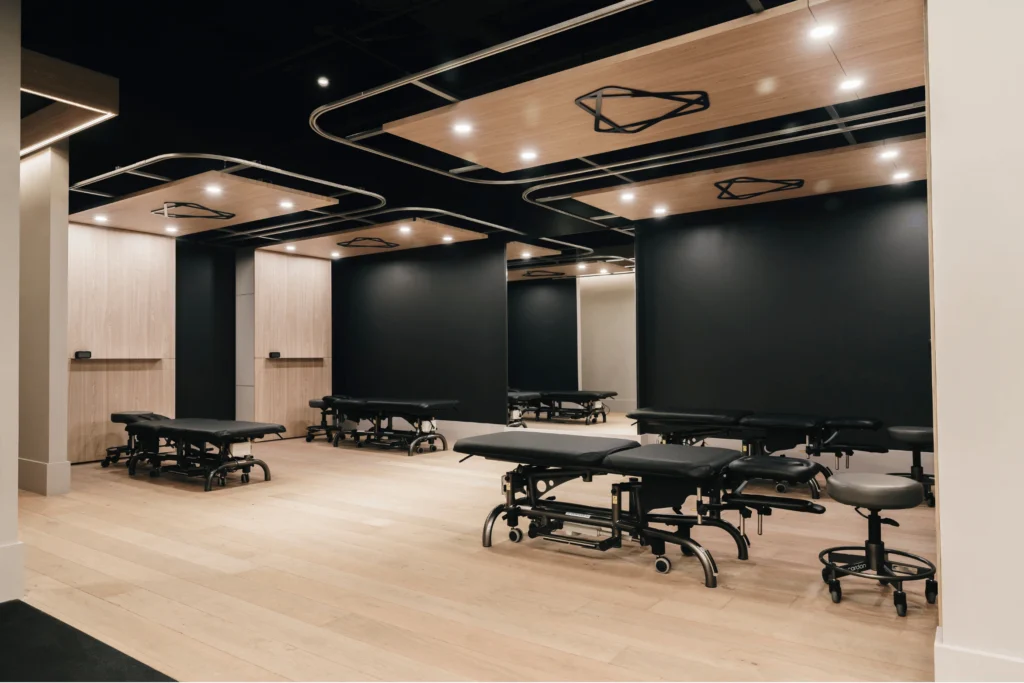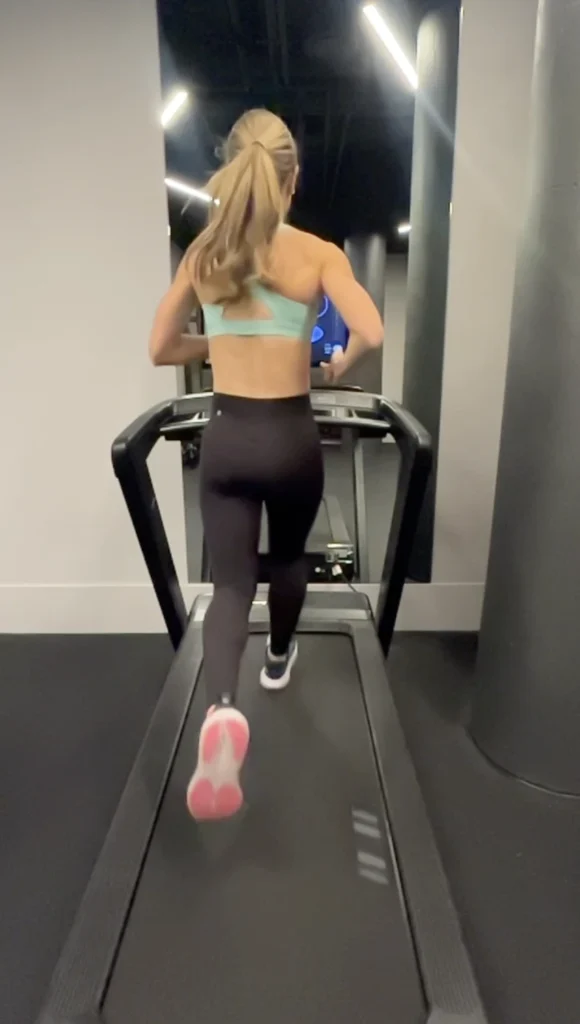I Tried Myo Physical Therapy: The Whole-Body Approach Transformed My Running

Athletech News tested Myo, a new physical therapy concept designed to go above and beyond the typical PT experience
All products featured on Athletech News are independently selected by our editors. However, when you buy something through our retail links, we may earn an affiliate commission.
Myo feels different from a traditional physical therapist’s office. The company’s space in Flatiron is bright but not clinical, with just a few clients moving through at a time, clearly designed to move the focus.
Each 60-minute session begins with a full-body assessment that looks more like a performance evaluation than a checkup. Your therapist observes how you move, asks about your habits and goals, and looks for patterns instead of isolated pain points. The approach treats the body like an integrated system, perfect for those (like me) who may train and run intensely, then quickly pivot to sitting at a desk all day. I met with Dr. Aimee Anagnostos, the clinic director, who made me feel at ease throughout the evaluation process.
I came in for something that’s probably familiar to a lot of runners, a dull tightness in my right lower back that always hits around mile three. It wasn’t painful, just annoying enough to make every run feel slightly misaligned.

The Approach
Myo’s process builds gradually through what it calls its “FutureProof Phases”: starting with awareness and mobility, then progressing into strength and performance. The assessment immediately revealed what was really happening. My right hip rotated less than my left, my right glute was weaker, and I loaded more weight onto that side when standing and running. After a short round of myofascial release work, my back already felt about 25 percent freer, based on Dr. Aimee’s assessments.
Between sessions, my therapist gave me a few targeted exercises to do before runs, like hinges and “Penguins” with a resistance band. They were simple but surprisingly effective, retraining my body to activate the right muscles before hitting the road.
When I came in for my follow-up, my therapist immediately noticed the difference. The tightness that had once shown up after just a few miles was easing, and my movement looked more balanced. The combination of strength work and flexibility exercises, especially the ones targeting my hips, had started to pay off. Even small cues from our first session, like engaging my glutes before a run, made a noticeable difference in how my stride felt and how my body recovered afterward.
The Run Assessment
On my third visit, I came in for the Myo Run Assessment with Dr. Rachel Hey-Shipton, a 60-minute deep dive designed to help you run smarter and stay injury-free. At $275, it’s positioned less like rehab and more like performance optimization.
This session built on everything Dr. Aimee and I had already worked on. After improving my hip mobility and glute strength in our first two sessions, the next step was to see how those changes translated into motion. My run specialist started with a few mobility checks and single-leg balance tests before moving to the treadmill. She had me run at my normal pace while filming from multiple angles in slow motion.
Watching the footage back was eye-opening. Frame by frame, she showed me how my right hip still wasn’t fully extending, how my trunk stayed a bit too upright, and how that tiny imbalance caused me to overstride on my right side. Every time I drove my knee forward, my pelvis collapsed slightly, forcing my back to overwork, the “tightness” I’d been feeling at mile three. Seeing it play out in real time was enlightening and motivating.

From there, we worked on technique. She had me hinge forward slightly from my pelvis instead of my lower back, engage my core and think about driving through my glutes instead of pulling with my hamstrings. The adjustments were subtle but immediate. Within minutes, my stride felt smoother, lighter and more controlled. My foot strike landed closer to my center of gravity, my hips moved more freely and the motion felt connected.
What impressed me most was how precise yet practical the feedback was. We were focusing on patterns that could make me more efficient and less prone to fatigue or injury. She also gave me a few pre-run activation drills to help reinforce the new movement pattern, including glute activation in pigeon pose and banded marches to train hip drive without overextending my back.
Since that session, my running has completely changed. For anyone who is serious about running regularly, it’s the kind of insight you don’t know you need until you see it.
The Bottom Line
Overall, what surprised me most about Myo was how it uncovered things I never realized were holding me back. I walked in thinking I just needed to release some lower back tension, but the process revealed subtle imbalances that had been affecting my running, posture and even how I sat at my desk. For runners especially, it can be a game-changer: small adjustments to form and muscle activation that completely shift how efficient and comfortable each stride feels.
At Myo, the first 60-minute session is $250, which includes a full-body evaluation, manual therapy and a tailored exercise plan; follow-ups or specialty sessions like the Run Assessment are $275. Scheduling is simple through Myo’s online booking platform, with options to bundle sessions or build a plan around your training goals.
For anyone who moves regularly, whether that’s running, lifting, or just wanting to feel better day to day, Myo offers an accessible, results-driven approach that can change the way you move in ways you didn’t even realize needed changing.



